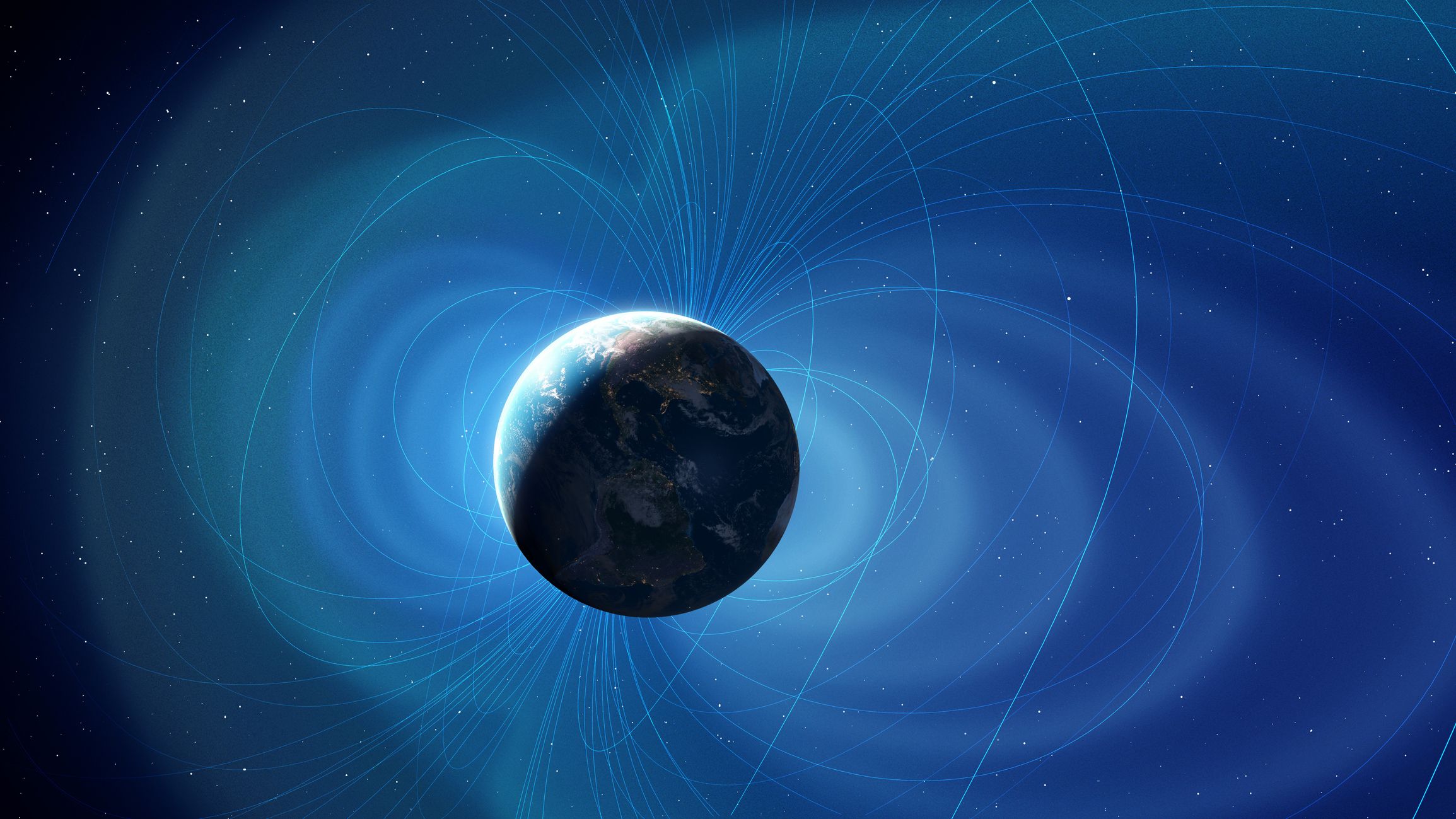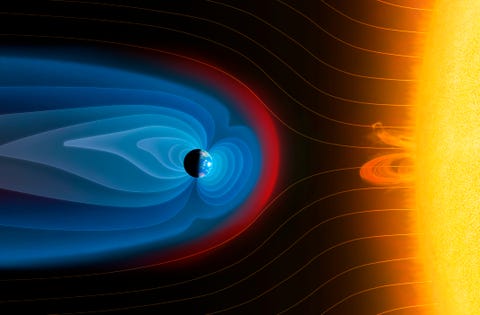Pangea (or Pangaea), the massive landmass that united all seven continents into a single massive continent during Earth’s prehistoric past, dissolved around 200 million years ago. According to scientists, we’re about 200 million years away from the formation of a new, Pangea-like supercontinent in a fascinating twist of terrestrial evolution.
There are four prevailing versions of how this supercontinent will evolve, according to a research article published in Geological Magazine in 2018.

In the first scenario, we assume the Atlantic Ocean keeps opening up, while the Pacific Ocean keeps closing. Subduction zones, or places where oceanic plates sink into continental plates and then into Earth’s mantle, abound in the Pacific Ocean. (This is also why 80 percent of large earthquakes occur near the Pacific Ocean’s earth’s surface, also known as the “Ring of Fire.”)
As a result of this tectonic activity, the Americas are continuing to separate from Europe and Africa, which means they will eventually collide with northbound Antarctica, and then with Africa, Europe, and Asia, which will already be crammed together. Meanwhile, Australia will have docked to East Asia. The end result is a massive megacontinent known as “Novopangea” (Greco-Latin for “New Pangea”).
The Atlantic and Indian Oceans continue to expand in the “Pangea Proxima” (or “next Pangea“) scenario until new subduction zones pull the continents back, resulting in a collision between Eurasia and the rest of the continents. Consider a ring-shaped landmass with a small ocean basin in the center as the end result.
The Pacific and the Atlantic are really old—a whopping 200 million and 180 million years old, respectively. So, what if they both closed down? In that case, the “Aurica” supercontinent (a mixture of “Australia” and “America”) would be founded.

“We are assuming there are only two oceans, the Atlantic and the Pacific. But on Earth, you have more options, like the Indian Ocean,” says João C. Duarte, an assistant professor in tectonics at the University of Lisbon Portugal, who is also the creator of the Aurica hypothesis. “It’s possible to close both the Atlantic and the Pacific, because they are both at this time really old,” Duarte tells Popular Mechanics. All that is needed is a third ocean. It’s already there and it’s the Indian Ocean, the youngest of the bunch, “only” about 140 million years old. So, if the Indian Ocean opens in the future, and the Pacific and the Atlantic close, all seven continents will become one big Aurica around the equator.
Finally, the “Amasia” (a portmanteau from “Americas” and “Asia”) theory speculates that the Atlantic and Pacific will remain open, while the Arctic Ocean closes. In that case, all continents except Antarctica will start moving north and settle near the North Pole. “You end up with a huge ocean around the North Pole and Antarctica on the other side,” Duarte explains.
“Once the continents reach a supercontinent state, carbon dioxide emissions from volcanic activity are a major uncertainty.”
Researchers used 3D global climate models to simulate how the Aurica and Amasia land arrangements would impact our climate in a study published in the journal Geochemistry, Geophysics, Geosystems in July 2021. If you like Netflix’s post-apocalyptic dystopian thriller series Snowpiercer, in which the entire world is frozen except for a train named Snowpiercer that constantly encircle the Earth, rejoice.
If the Amasia scenario wins, and all land masses around the North and South Poles fade away, the ocean conveyor belt, a constantly moving system of deep-ocean circulation that carries heat from the equator to the poles, will be disrupted, making the poles not only colder, but covered in ice all year. “ All of that ice would reflect heat out into space,” Michael Way, a physical scientist at the NASA Goddard Institute for Space Studies in New York, who spearheaded the July 2021 study, tells Popular Mechanics.

Aurica, on the other hand, could be a surfer’s paradise. “This supercontinent will be near the equator, so it will probably be a little warmer, and maybe drier than today’s Earth,” says Duarte, who believes Aurica is the likeliest supercontinent scenario and Amasia the least likely. A warmer Earth (by three degrees Celsius, according to their models) could result in the spread of Brazil-like coasts, complete with beautiful white-sand beaches, enchanting coral reefs, and sand dune complexes, but also strong ocean currents.
But there’s a catch. A glaciated Amasia would wipe out almost all forms of life on Earth, sparing only life in the ocean—Waterworld, anyone? However, this does not preclude the balmier Aurica from just being cruel to several species. “Many species will face fierce competition and fight each other for survival as continents come together. We should be expecting mass extinctions,” says Duarte.
For Alex Pullen, an assistant professor of environmental engineering and earth sciences at Clemson University in South Carolina, we come up against certain challenges when we try to look that deep into the future. To begin with, we have no idea what vegetation will look like in 200 million years. Pullen tells Popular Mechanics, “Plants have a profound impact on atmospheric chemistry, precipitation, clouds, and albedo (the fraction of light a surface reflects).” “Also, once the continents reach a supercontinent state, carbon dioxide emissions from volcanic activity are a major uncertainty.”
Additionally, we have no clue what greenhouse gasses will look like in the future, nor do we know how the ocean and atmospheric circulation around Aurica and Amasia would impact these greenhouse gasses, Pullen continues. “No aerosols (microscopic solid or liquid particles suspended in the air or as a gas) were included in the models either, which are profoundly important to the climate,” he says.

But Way knows there are a host of things that are beyond our grasp of prediction, given how we abuse the planet. “We can’t really understand how climate change or filling the oceans with pollution and plastic are going to affect the planet,” he says. He is pessimistic about humans but hopeful about the environment. “For most of the last four billion years, our planet has had fairly temperate conditions on its surface, except for a few small periods of time. We don’t completely understand how the planet did it. “It’s incredible, isn’t it?” he asks. “The planet will most likely recover from the abuse we’ve given it.”
Perhaps humans will survive, too, but in a more evolved fashion. However, we have been conditioned to believe that evolution is directional.
“We believe evolution is always moving in the direction of improvement. ‘Yeah, we are very intelligent,’ we say,” Duarte explains. “Maybe in the future there will be superintelligence, but that assumes intelligence is always a good thing,” Duarte continues. There are theories saying intelligent species come with a load of self-destruction baggage. “We have the ability to create nuclear weapons that can kill all humanity,” Duarte says, alluding to the ongoing Russo-Ukrainian War. For a post-human species 50 to 250 million years into the future to survive, you need more than intelligence: you need to live in harmony with the surrounding ecosystem, Duarte says.
In any case, these changes are unlikely to happen in our lifetimes, our grandchildren’s lifetimes, or even 1,000 grandchildren’s lifetimes, as Way implies. They are, however, already going to take place. We cannot feel it, but everything is changing—constantly, subtly, imperceptibly.
“On Earth, we have mountain construction. We have new islands being generated in the Pacific from volcanism … The plates are still moving on the planet and there’s a Richter-6 earthquake everyday somewhere on the planet,” says Way. We are probably halfway through a major planetary transition, and we don’t even know it.





